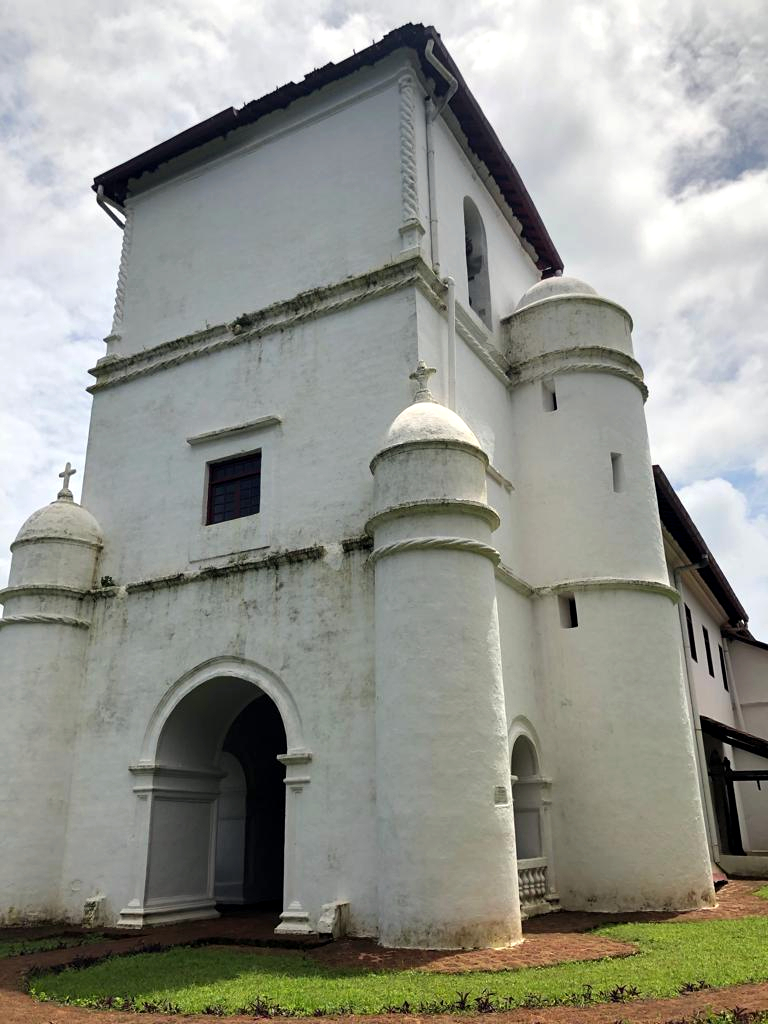
The Church dedicated to Our Lady of the Rosary in Old Goa, Igreja de Nossa Senhora de Rosario, atop the Monte Santo (Holy Mountain), is a few metres away from the Santa Monica Convent.
It was one of the first churches constructed by the Portuguese after the conquest of Goa in 1510. It is also the oldest surviving church here and since it was located far outside the city centre, it was not subjected to any modernisation. Other buildings of the same period have been massively overbuilt and reshaped in the course of time. The feast of the patroness will be celebrated here this year on October 8.
ORIGIN
The history of the Church goes back to the time of Alfonso de Albuquerque, who sitting atop the mount surveyed the attack of Adil Shah of Bijapur. He vowed to construct a church here to thank God when he learnt about the victory and dedicate it to Our Lady of the Rosary.
Antão Nogueira de Brito, the master-builder, then designed a small chapel on Monte Santo. The church was not constructed during his life, though he originally constructed a hermitage on the site. A couple of years later because of the increasing Catholic population, a larger church was needed, hence around 1543, construction of a new church began here, and it took six years to complete it. In 1931, the Archaeological Committee of Goa placed a marble slab on the walls of the church with the inscription: “From this height, Afonso de Albuquerque watched the re-conquest of Goa on 25/11/1510.”
CHURCH
The Church has a simple design which has been preserved up to this day. It is constructed of laterite stone and plastered with lime mortar. Its architecture has features of the classic Gothic style, whose influence is clearly visible in the rib of the portico; the roof is tiled and supported by wooden rafters, along with the Portuguese-Manueline style (the Manueline style originated in Portugal during the reign of King, Dom Manuel (1469-1521, hence the name).
The Renaissance influence is reflected in the interior vaults and decoration of the retables. The naïve of the church is topped with a single tiled roof because the original ceiling caved in 1897, damaging the vaults of the side altars.
The façade of the Church has three floors and two-storied porticos. The upper level is distinguished by slender columns, and it has round arched windows in which bells are hung. One of the bells, made by Peter Dias Bocarro in 1618, bears an inscription, which translated reads, “Mary was assumed into heaven. The angels rejoice and bless the Lord in praise. Hail Mary, full of grace! The Lord is with thee. Blessed are you among women and blessed is the fruit of your womb Jesus. Holy Mary.”
The southern cylindrical tower has a turning staircase that leads to the choir loft on the first floor, while the northern tower contains within it a baptismal font, which has been carved out of a single granite slab on the lower level.
It has high windows on all sides near the roof and it gives the impression of a fortress church with a cruciform plan. In addition, manual Indian designs are visible elements on the facade.
ALTARS
The Church has three altars. The main altar is dedicated to the patroness, Our Lady of the Rosary. On the other alters are the images of St Anthony, the Crucified Christ. In front of the main altar is a tombstone of the Portuguese Governor, Garcia de Sa and set into the northern wall of the chancel is the alabaster Mausoleum of his wife, Catarina a Piro, in Persian style. She was the first Portuguese woman to come to Goa.
As per the legend, St Francis Xavier married them when she was on death bed; the following words in Articulo Mortis, (at the moment of death). Her cenotaph is slightly protruding from the wall and on it is an inscription in Portuguese, which when translated means, “here lies Dona Caterina, wife of Garcia de Sa, who requests the readers of these lines to beg God’s mercy on her soul.”
(The writer is Superior at Casa Professa, Basilica of Bom Jesus in Old Goa)